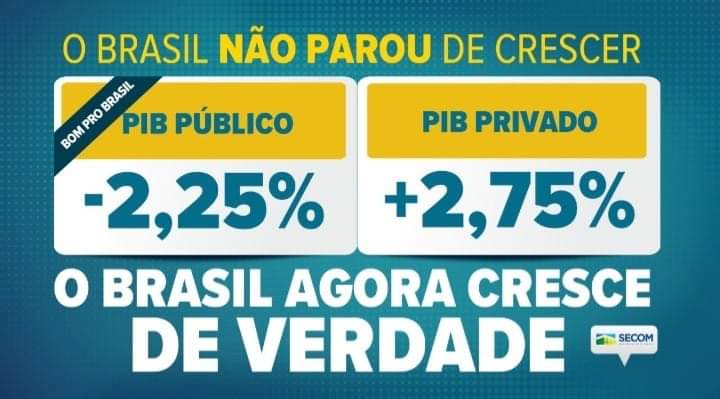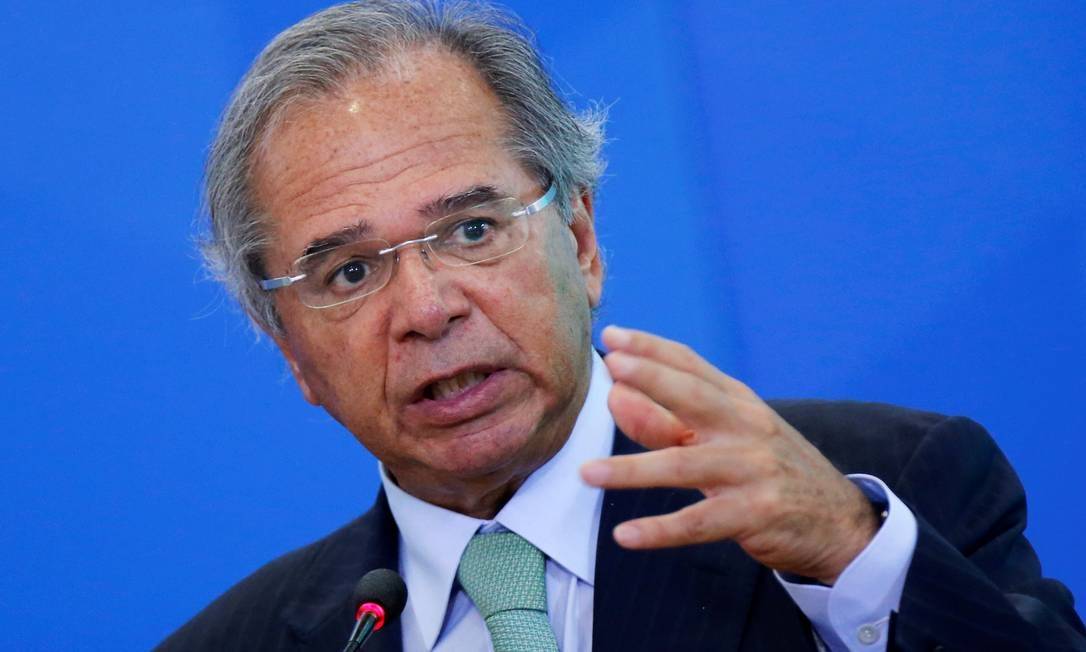RIO DE JANEIRO, BRAZIL – “Brazil is now really growing,” says a Ministry of Economy advertisement on display this week, referring to the increase in private Gross Domestic Product (GDP) in 2019.

According to calculations by the Secretariat of Economic Policy, the private sector’s contribution to the rebound in growth was 1.81 percent of the 2019 GDP, compared to 1.43 percent in the previous year. Meanwhile, the public sector’s contribution dropped 1.11 percent, compared to a 0.89 percent increase in the annual comparison.
The announcement, which garnered criticism from economists, particularly for the methodology used in the calculation, began to unfold on Wednesday, March 4th, the same day that the economy’s performance in 2019 was disclosed, when Brazil experienced its third consecutive year of weak growth, up only 1.1 percent from an expected 2.5 percent in early January 2019.
The Ministry of Economy subtracts what is public from the gross fixed capital formation (GFCF), linked to the rate of investment in the economy, and adds household consumption, in order to make this calculation.
In addition to the decelerated pace in the fourth quarter, last year’s GDP suffered from the relevant drop in GFCF. The indicator shows a decline of 3.3 percent in the last three months of the year, perceived as worrisome by the market, compared to the 0.4 percent in the third quarter in the annual comparison.
Family consumption grew 2.1 percent in the year and 0.5 percent in the quarter compared to the immediately preceding period. “As investment fell sharply in the period, it was family consumption that boosted private GDP,” says João Costa Filho, professor of economics at FGV.
“This trend has been observed for years. When the country relies on family consumption, it grows little, since you can’t expect people to spend an extra five percent every year,” he says.
Although families consumed less than expected at the end of last year, heavily influenced by peak inflation in the period, this is the segment that should continue to drive the economy in 2020.
Natural trend
The shift in the investment power of the public sector to the private sector is nothing new. In 2017, for instance, the difference between the two rates reached 3.81 percentage points, much higher than the current one and than the average of 0.66, recorded in 1997.

In addition, the decline of public investment compared to private investment is expected to be more relevant now that the government is suffering from a fixed budget. “The trend conveys a scenario through which the country is undergoing an adjustment of public spending over the last few years.
It’s natural for the private sector to grow a little more,” says Sergio Vale, chief economist at MB Associates. “It’s not because of this factor (the progress in private GDP), alone, that we will experience a greater dynamism in the economy to the point of making the country grow more up ahead,” he says.
The economist points out that, despite the low investment capacity of the federal government today, we cannot disregard the role of the public sector as a moderator and generator of public policies. “If government spending continues to shrink, we’ll have problems up ahead with or without increasing private participation,” he says.
Worldwide, the practice of releasing public and private investment results separately is unusual, since GDP is a product and there is no product that is strictly public.
Although economists acknowledge the need for separation to understand how the economy evolves, Filho, of FGV, points out that the methodology used by the Brazilian government is mistaken.
“Let’s assume that the government bought a chair for a public school. The private sector produced that chair, but the government spent on it. My question is: is this a private-sector production because it will generate income for the businessman, salary for his employees, company rent, etc. or does it count as a public GDP perspective? There is duplicity of information there. This separation between the public and private sector seems strange,” he says.
However, this does not mean that the progress of private spending should not be celebrated. “If the government had the money it had in the past, and could spend and increase the fiscal deficit as it did in the past, the country would probably have grown by three percent. It’s indeed private investment that is holding up,” says Michel Viriato, a professor of finance at INSPER.
Gabriel Brasil, a political risk analyst for Brazil, Argentina, and Uruguay at Control Risks, explains: “With a lower than expected result, the government is trying to find positive angles to disclose the GDP, in an attempt to encourage private investment in the country,” he says.

